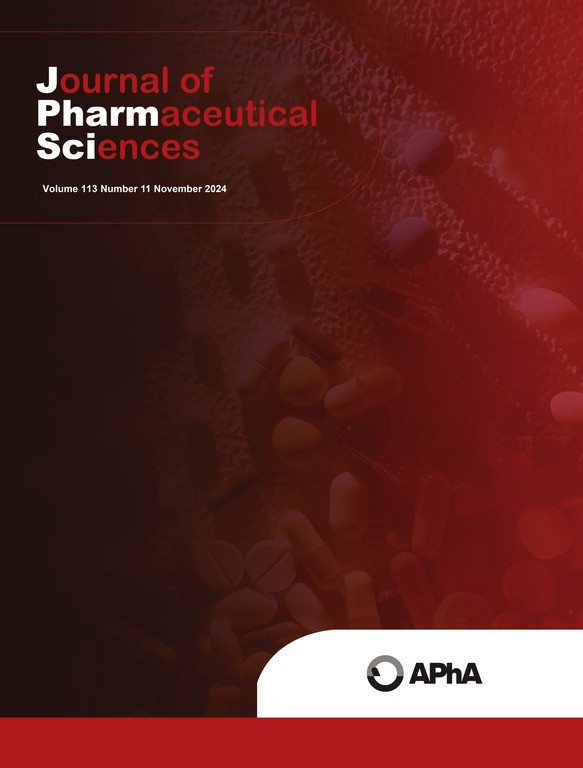利用长链脂质的消化产物,在脂质 SEDDS 中大幅提高极难溶于水的碱性药物氯法齐明的溶解度。
IF 3.7
3区 医学
Q2 CHEMISTRY, MEDICINAL
引用次数: 0
摘要
氯法齐明(CFZ)是一种治疗麻风病和耐药结核病的高效抗生素,被列入世卫组织基本药物清单。然而,目前世界上还没有具有最佳生物利用度的CFZ产品。制造商撤回了其唯一上市的产品,可能是由于其在胃肠道pH值范围内的水溶性极低,生物利用度差且不稳定。我们开发了一种自乳化药物递送系统(SEDDS),使用含有单油酸甘油酯和油酸的脂质消化产物(LDP),其摩尔比为1:2,以增加药物的溶解度并确保快速分散到微乳液中。而CFZ在单油酸甘油、三油酸甘油和两种常见表面活性剂(Tween 80和Kolliphor EL)中的溶解度相对较低(本文章由计算机程序翻译,如有差异,请以英文原文为准。
Highly increasing solubility of clofazimine, an extremely water-insoluble basic drug, in lipid-based SEDDS using digestion products of long-chain lipids
Clofazimine (CFZ) is a highly effective antibiotic against leprosy and drug-resistant tuberculosis and is on the WHO List of Essential Drugs. However, no CFZ product with optimal bioavailability is available worldwide. The manufacturer withdrew its only marketed product, presumably due to poor and erratic bioavailability because of extremely low aqueous solubility in the gastrointestinal pH range. We developed a self-emulsifying drug delivery system (SEDDS) using a lipid digestion product (LDP) containing glyceryl monooleate and oleic acid at ∼1:2 molar ratio to increase drug solubility and ensure rapid dispersion into microemulsion. While solubilities of CFZ in glyceryl monooleate, glyceryl trioleate, and two common surfactants (Tween 80 and Kolliphor EL) were comparatively low (<15 mg/g), oleic acid provided a very high solubility of ∼500 mg/g. Because of the presence of oleic acid, the clofazimine solubility in SEDDS containing a 50:50 w/w mixture of LDP and surfactants increased to 130 mg/g. Two formulations having 50 or 100 mg CFZ in one gram of SEDDS were developed. They dispersed rapidly and almost completely in simulated intestinal fluid and in the USP pH 6.8 phosphate buffer containing 3 mM sodium taurocholate. There was some precipitation of CFZ as the HCl salt at low gastric pH during dispersion testing, but the effect could be avoided using enteric-coated capsules. Thus, an enteric-coated lipid-based formulation for CFZ with as high as 100 mg/g drug loading was developed, providing complete drug release and producing microemulsions under intestinal pH conditions.
求助全文
通过发布文献求助,成功后即可免费获取论文全文。
去求助
来源期刊
CiteScore
7.30
自引率
13.20%
发文量
367
审稿时长
33 days
期刊介绍:
The Journal of Pharmaceutical Sciences will publish original research papers, original research notes, invited topical reviews (including Minireviews), and editorial commentary and news. The area of focus shall be concepts in basic pharmaceutical science and such topics as chemical processing of pharmaceuticals, including crystallization, lyophilization, chemical stability of drugs, pharmacokinetics, biopharmaceutics, pharmacodynamics, pro-drug developments, metabolic disposition of bioactive agents, dosage form design, protein-peptide chemistry and biotechnology specifically as these relate to pharmaceutical technology, and targeted drug delivery.

 求助内容:
求助内容: 应助结果提醒方式:
应助结果提醒方式:


